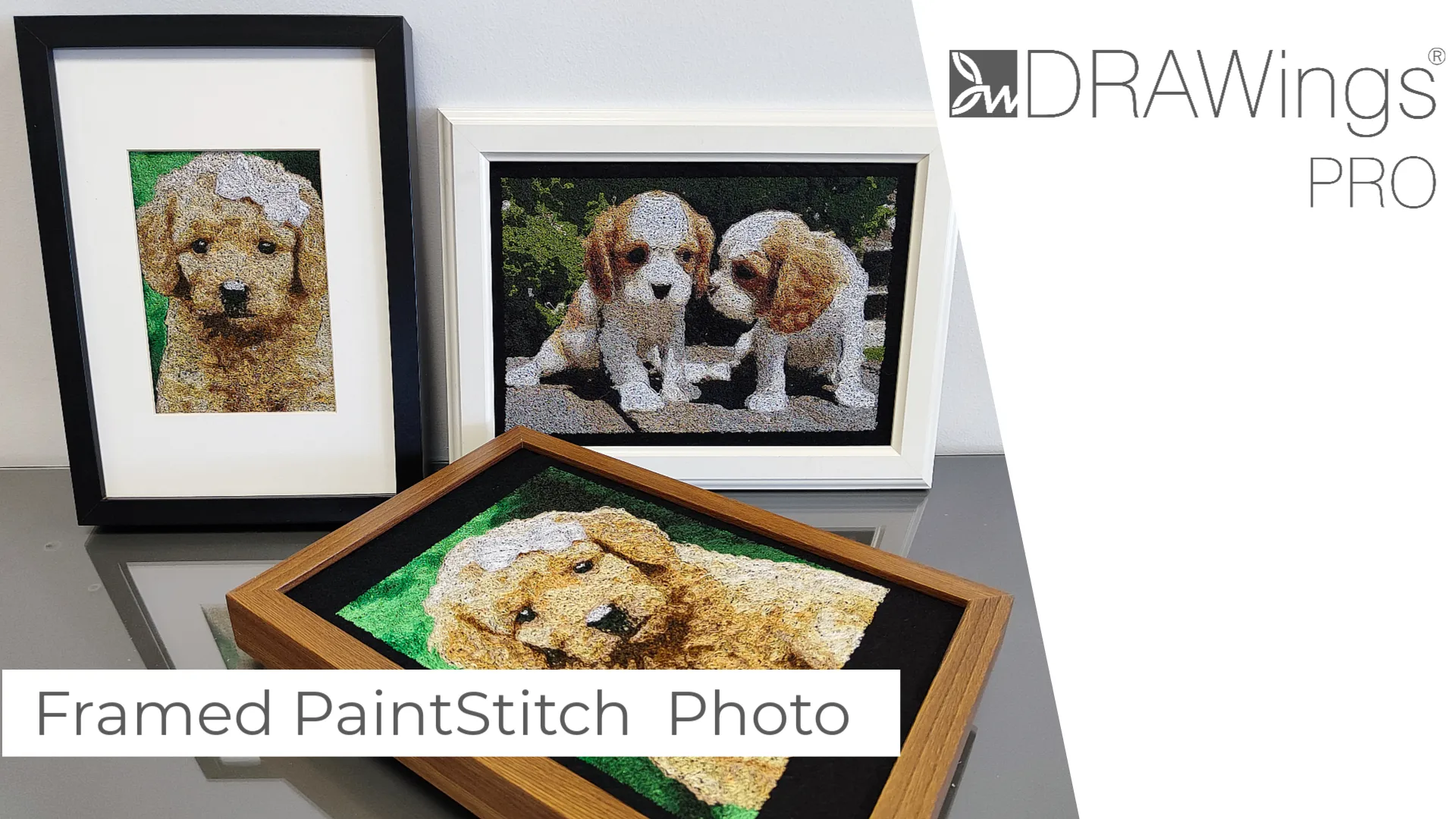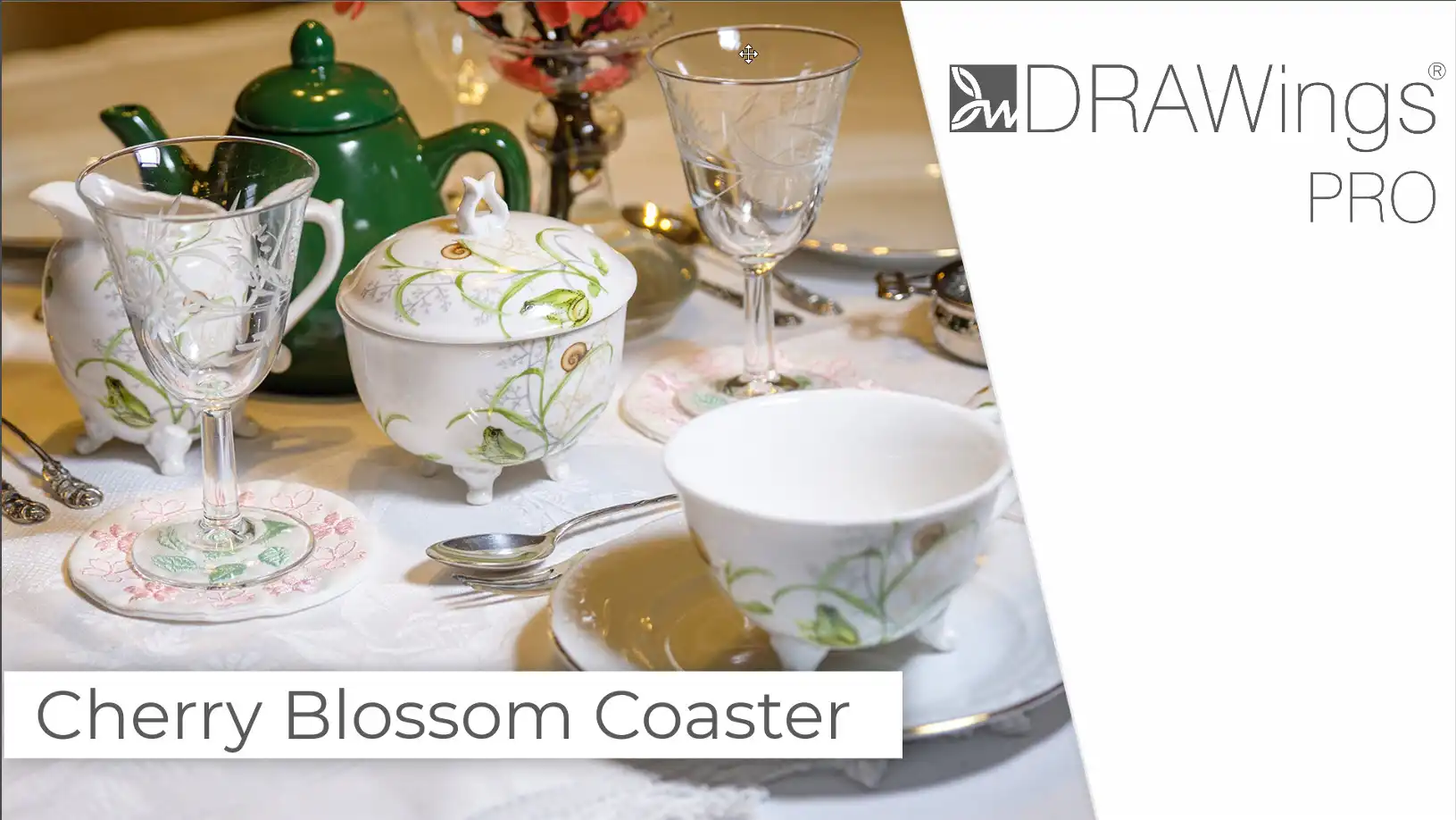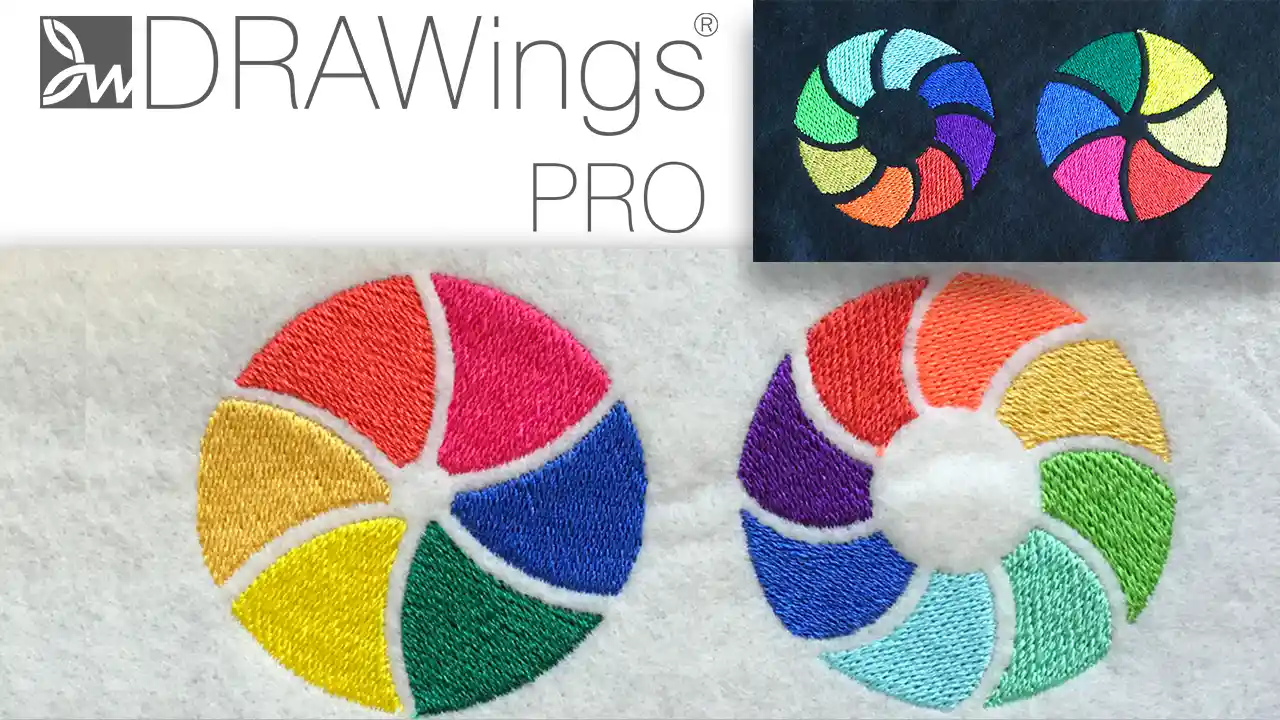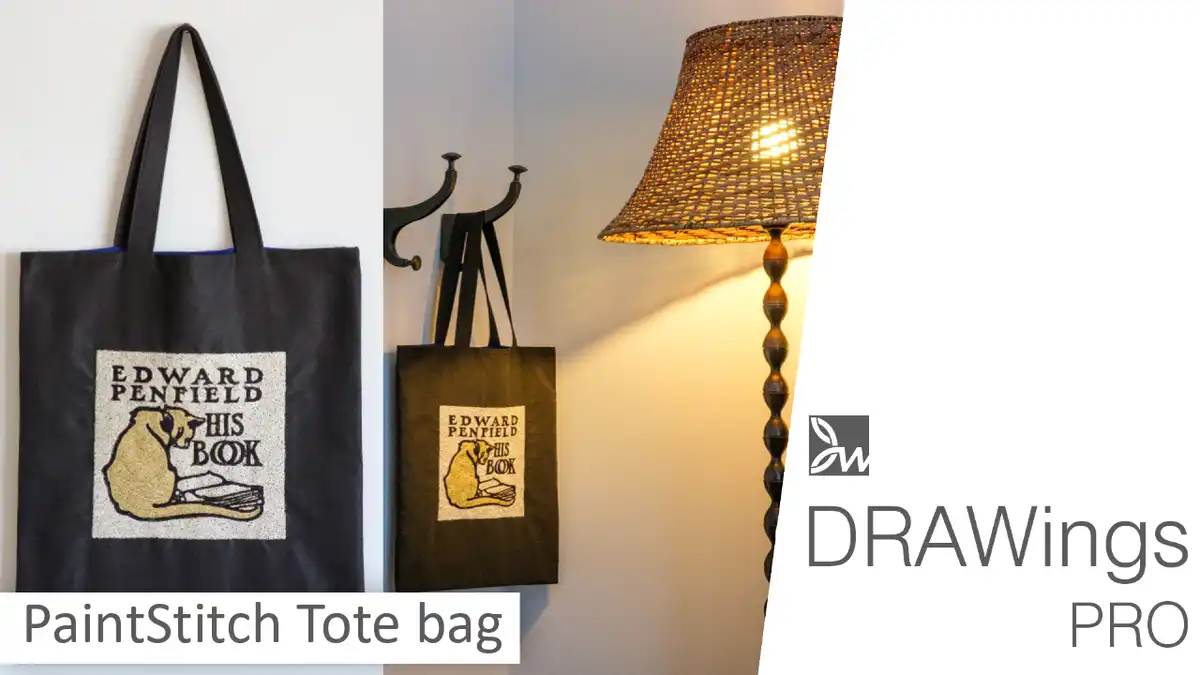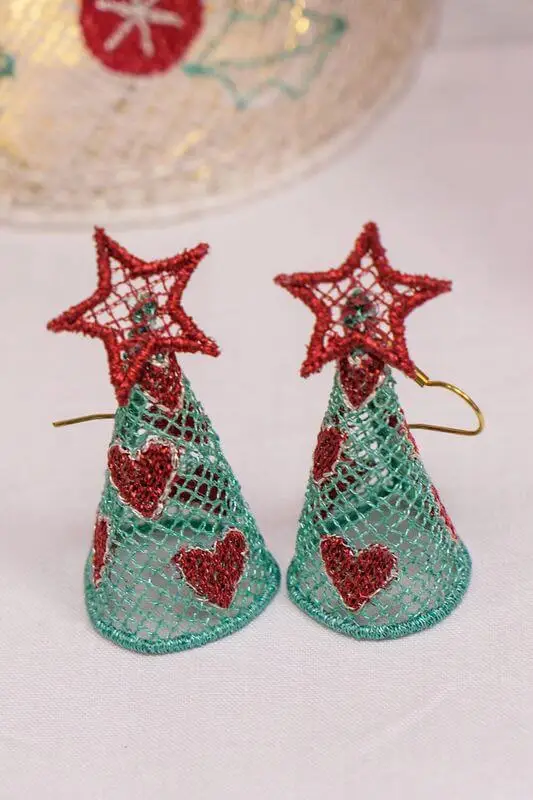DIY Personalized Monogram Lunch Bag: Applique & 3D Foam Tutorial
Create a Personalized Monogram Lunch Bag with 3D Foam Embroidery and Applique. Back-to-school season often brings a wave of nostalgia and excitement. But for those of us who have moved from the classroom to the office, it’s also a reminder that a little personalization can go a long way. Why not add a touch of home to your daily routine with a custom embroidered lunch bag?
Whether you’re making one for yourself or as a gift, a monogrammed lunch bag combines practicality with a personal flair. This project is an excellent way to explore the features of DRAWings PRO Embroidery software, including applique, 3D foam, and sequence management.
Getting Started: Setting Up the Initial Design
We begin our project by designing the monogram, which will be the focal point of the lunch bag. For this, we’ll type the initial of the recipient’s name—let’s use “M” for Morgan—using the font “xpg213” at a size of 150. It’s important to ensure that your letter is centered within the hoop.
Centering is crucial because it ensures the design is balanced on the finished product, which is particularly important when dealing with monograms. Additionally, disable the Proportional setting. By doing this, you gain complete control over the width and height of the letter, allowing you to set both dimensions to exactly 120mm. This precise adjustment helps maintain the symmetry of the design, ensuring the letter fills the space without becoming distorted.
This step is foundational to the entire project. The precision you apply here affects the visual appeal and balance of the final embroidery. The ability to manipulate these settings directly in the software lets you tailor the design to your specific needs, and understanding these controls is key to mastering the software.
Creating the Rectangle: Preparing for the Trim Function
Next, we introduce a rectangle shape that will serve as a trimming tool for our letter. Set the width to 140mm and the height to 30mm, and make sure it’s centered to the hoop. The dimensions here are not arbitrary; they are calculated to trim the letter in a way that maintains the visual weight and symmetry of the design. Trimming the letter with a rectangle allows you to create a monogram with clean lines and a modern aesthetic.
The Trim function is a powerful tool that enables you to customize shapes in ways that are not possible with simple fonts. By trimming the letter using the rectangle, you can create a unique monogram that stands out. The software’s precision trimming ensures that your design is crisp and professional-looking, setting the stage for the next steps.
Trimming the Letter: Shaping the Monogram
After positioning the rectangle, select both the letter and the rectangle, then use the Trim option from the Shaping tools. Trimming is where your design begins to take on its final form. The trimmed letter now has the added rectangle as a deliberate cut, which will become a signature element of the monogram.

After trimming, create a duplicate of the trimmed letter. The duplicate will serve different purposes as we move forward—one for applique, the other for a satin stitch outline.
Creating the Satin Stitch Outline: Adding Dimension
With the duplicate letter selected, remove the fill, and set the outline to a Satin serial stitch with a width of 3mm. Satin stitches are ideal for creating a bold, smooth outline that adds a touch of elegance to the monogram. The 3mm width strikes a balance between visibility and refinement, making the outline prominent but not overpowering.
In embroidery, outlines play a critical role in defining shapes and adding contrast. By using Satin serial stitch, you can create an outline that not only frames the letter but also adds texture and dimension. The software’s advanced stitch settings allow you to customize the appearance of the outline to suit your design needs.
Setting the Applique Fill: Building the Foundation
Switch your attention back to the original trimmed letter and set its fill to Applique, removing any outline color. Applique is a technique where fabric pieces are sewn onto another fabric base, creating a layered, textured effect. By setting the letter to Applique, you lay the groundwork for a design that is both durable and visually interesting. Applique is a versatile technique that can significantly reduce the stitch count of your embroidery, making it ideal for large designs like this monogram.
Adjusting the Rectangle: Refining the Design
Now, select the rectangle shape, right-click, and choose the Convert to Curves option. This allows you to manipulate the shape with more precision. Using the Node editor, split the outline and delete the two vertical lines. This step is about refining the design to make it more dynamic and less rigid. The horizontal lines left behind will later serve as a guide for the placement of the full name, adding balance and structure to the monogram.
The ability to convert shapes to curves and edit them at the node level in DRAWings PRO is a powerful feature that gives you complete control over your designs. This flexibility allows you to create custom shapes and modify existing ones with precision, ensuring that your final design is exactly as you envisioned.
Adding the Full Name: Personalizing the Monogram
Now that the monogram is trimmed and refined, it’s time to add the full name between the horizontal lines. For this, we’re using font “xpg257” at a size of 28. However, you’re free to experiment with different fonts and choose one that best suits your design. Centering the name between the lines is crucial for maintaining the balance and symmetry of the design.

Adding the recipient’s full name personalizes the monogram, making the lunch bag a truly special gift. The software has a wide range of fonts, and its precise alignment tools ensure that your text is perfectly placed, adding to the overall professionalism of the design.
Decorating the Monogram: Enhancing the Visual Appeal
Once the name is in place, it’s time to add some decorative elements. From the clipart gallery, select “Decorative02” and insert it into your design. Ungroup the clipart to isolate individual elements—in this case, the leaf branch. Feel free to edit it as you like and place it next to the monogram. Reuse the clipart on the other side, this time keeping the flower part.
Decorative elements are what take a design from basic to beautiful. The clipart gallery offers a wide variety of pre-designed elements that you can easily integrate into your projects. These elements can be resized, reshaped, and recolored to match your design, giving you endless possibilities for customization.
Finalizing the Design: Bringing It All Together
With the name, monogram, and decorative elements in place, your design is nearly complete. You may opt to keep the design as is, or you can take it a step further by adding 3D foam to the outline of the monogram, giving it a raised, tactile effect. To prepare for this, increase the stitch density from the Properties tab. This ensures that the stitches cut through the foam cleanly.
Using 3D foam in your embroidery adds a professional and luxurious touch to your designs. It’s particularly effective in monograms, where the raised effect can make the letters stand out even more. The ability to adjust stitch density and underlay settings allows you to create clean, precise outlines that work perfectly with 3D foam..
Adjusting the Embroidery Sequence: Ensuring a Professional Finish
The embroidery sequence is crucial when working with a combination of applique and foam. By default, the software might place the applique first, followed by the black lines, and then the name and decorations. However, for a cleaner finish, it’s better to embroider the name and decorations first, followed by the applique, and finish with the black lines.
Understanding and adjusting the embroidery sequence in DRAWings PRO is vital for achieving professional results. The sequence determines the order in which the machine stitches your design, and getting it right can make the difference between a polished, high-quality finish and one that looks less professional.
Adding the Final Touches: Perfecting the Monogram
After setting the sequence, switch to manual mode to place the stem lines before the leaves. This ensures a more realistic look, as the stems will naturally appear underneath the leaves in the final embroidery. Select the stem lines, right-click in the sequence manager, and use the Join Together option. Then move them before the leaves in the sequence.

These small adjustments can have a big impact on the overall look of your design. The manual mode gives you the flexibility to fine-tune every aspect of your embroidery, ensuring that the final product looks exactly as you intended.
Removing Overlapping Sections: Cleaning Up the Design
In the final stages, you may notice that some sections of the satin line overlap with the horizontal lines. To clean this up, use the node editor to split the outline at the points where the satin lines meet, and remove the overlapping sections. This step ensures that your design is clean and free of unnecessary stitches, which can affect the final look and feel of the embroidery.
The node editor is an indispensable tool for making these kinds of adjustments. It allows you to edit your design at the most detailed level, ensuring that every stitch is exactly where it should be. This level of control is what makes the difference between a good design and a great one.
Color Coordination: Creating a Monochromatic Design
If you prefer a monochromatic design, set the same color for all parts of the embroidery. Monochromatic designs can be very striking, especially when combined with 3D elements like foam. To eliminate any jump stitches between the satin cover stitches, select the satin part, right-click, and use the Break Apart option.
Choosing the right color scheme is crucial in embroidery. A monochromatic design can be both elegant and understated, allowing the texture and depth of the stitches to take center stage. The software’s color management tools make it easy to experiment with different color combinations and find the perfect one for your project.
Materials Required
Before we dive into the design and creation process, let’s gather all the materials you’ll need to complete this project:

- Embroidery Machine: Capable of handling in-the-hoop designs.
- DRAWings PRO embroidery software: To design and digitize the pattern.
- Printed Lunch Bag Pattern
- Printout of the Embroidery Design
- Fabric: 70 cm x 40 cm (for the main fabric)
- Thermal Insulation Fabric: 70 cm x 40 cm (for the lining)
- Applique Fabric (for the monogram)
- Fusible Interfacing (for adding structure to the main fabric and applique)
- Stabilizer (to prevent fabric distortion during embroidery)
- Adhesive Spray (for securing fabric to stabilizer)
- Foam Sheet (for 3D foam embroidery)
- Embroidery Threads (assorted colors matching your design)
- Sewing Clips or Pins (for holding fabric layers in place during assembly)
- Hook-and-Loop Fasteners (e.g., Velcro) (to keep the bag securely closed)
- Embroidery Hoop (suitable for the size of your design)
- Hot Gun (for refining 3D foam parts, if needed)
- Iron (for applying fusible interfacing)
- Scissors and Fabric Cutter (for cutting fabric and trimming excess)
- Measuring Tape or Ruler (for precise measurements and placements)
- Needle and Thread (for any hand-sewn finishing touches)
Notes:
- The exact amount of fabric and interfacing may vary depending on your chosen lunch bag pattern and desired size.
- You may need additional tools or materials depending on your chosen decorations or embellishments.
- Be sure to choose fabrics and threads suitable for machine embroidery and washing.
Preparing the Materials: Setting the Stage for Embroidery
With the design complete, it’s time to gather your materials. The right materials are key to the success of any embroidery project. By choosing high-quality fabrics and threads, you ensure that your embroidery will not only look great but also stand the test of time. The addition of thermal insulation fabric makes this lunch bag practical as well as beautiful, keeping your meals fresh throughout the day.
Cutting the Fabric: Preparing for Assembly
Start by using the pattern to cut the front and back sides of both the main fabric and the thermal insulation fabric. Next, iron-on the fusible interfacing to the back side of the main fabric layers, as well as the applique fabric. This adds structure and stability to your lunch bag, ensuring that it holds its shape and that the embroidery sits smoothly on the fabric.

Proper preparation of your materials is essential for achieving a professional finish. The interfacing adds strength to the fabric, preventing puckering or distortion during embroidery. The design tools of the software allow you to accurately position your embroidery, ensuring that it aligns perfectly with the fabric pattern.
Positioning the Design: Getting Ready to Embroider
Fold the front side of the fabric to find the middle, and use the printed design to find the right placement for the embroidery. Remember that the flap of the lunch bag will cover the upper part of the design, so take this into consideration when positioning the monogram. Mark the center of the design on both the fabric and the stabilizer.
Accurate placement of your design is crucial for a polished final product. DRAWings PRO’s printing feature allows you to create a physical template that you can use to ensure your embroidery is perfectly aligned. This step helps you avoid common mistakes like off-center designs or misaligned elements.
Stabilizing the Fabric: Preparing for Embroidery
Cut a piece of stabilizer large enough for your hoop and mark its center. Align the center of the fabric with the center of the stabilizer, and use adhesive spray to keep the fabric in place. Stabilizer is essential for preventing fabric distortion during embroidery, especially when working with stretchy or delicate fabrics.
Using stabilizer correctly is key to achieving a smooth, professional finish. The alignment tools of the software help you position your fabric and stabilizer perfectly within the hoop, ensuring that your embroidery is even and secure. This step is particularly important when working with large designs like the monogram.

Embroidering the Design: Bringing It to Life
Attach the hoop to the machine and begin embroidering. The machine will first stitch the name in the middle of the design, followed by the decorative elements, the applique, and finally the 3D foam satin stitch outline of the monogram. The two parallel lines that separate the monogram will be embroidered last.
Watching your design come to life on the embroidery machine is one of the most rewarding parts of the process. The sequence management ensures that each element of your design is stitched in the correct order, resulting in a clean, professional finish. This step highlights the importance of careful planning and preparation.
Trimming and Finishing: Final Steps for Embroidery
Once the embroidery is finished, remove the hoop from the machine and carefully cut away the stabilizer from the back of the fabric. Then, tear off the foam from the design, using a hot gun if necessary to refine the 3D parts. The foam gives the monogram a raised effect, making it stand out from the rest of the design.

Finishing your embroidery correctly is essential for achieving a professional look. Taking the time to trim excess fabric and refine the 3D foam ensures that your finished product looks polished and professional.
Assembling the Lunch Bag: Bringing It All Together
With the embroidery complete, it’s time to assemble the lunch bag. Place the two main fabric layers right sides together and secure them with clips. Sew along the sides and bottom to create the bag’s structure. To create the box style on the bottom corners, hold the edges together and sew along them. Repeat the process with the insulation layers, leaving an opening on one side to help you unfold the bag later.
Assembly is where your design truly comes to life. The construction of the lunch bag is straightforward, and the addition of thermal insulation fabric makes it practical as well as stylish.
Final Assembly: Completing the Project
Turn the main fabric right side out and place it inside the insulation layer. Use sewing clips to keep everything in place, then sew along the edge to join the main fabric and the lining together. Unfold the bag through the opening left in the lining and sew it closed. Finally, fold the lining inside the bag and topstitch around the edge to finish.

Final Touches: Personalization and Gift Giving
With the bag assembled, you can add any final touches, such as sewing on the hook-and-loop fasteners (like Velcro) to keep the bag securely closed. Your embroidered monogram lunch bag is now complete and ready to use or gift to a loved one. The combination of applique, 3D foam, and careful sequence management has resulted in a unique, personalized item that is sure to impress.
Final Thoughts
Creating an embroidered monogram lunch bag with DRAWings PRO is a rewarding experience that allows you to explore a wide range of techniques, from applique to 3D foam embroidery. Each step of the process, from setting up the initial design to assembling the final product, is an opportunity to refine your skills and create something truly unique.
By following the steps outlined in this blog post, you’ll be able to create a custom embroidered monogram lunch bag that is not only practical but also a work of art. The combination of applique, 3D foam, and careful sequence management ensures that your design is both beautiful and durable, making it a perfect gift or a special treat for yourself. So why not give it a try and see what you can create with DRAWings PRO?
DRAWings PRO Help Group
Happy crafting and don’t forget to share your creations with us in the
DRAWings PRO Help Group!
You can download the .DRAW file of the project, for free, from the link below:
- Project’s .DRAW file: DIY Personalized Monogram Lunch Bag: Applique & 3D Foam Tutorial
It can open only with the XII and later versions of DRAWings embroidery software
Frequently Asked Questions
Check also, our related projects “Creating an In-the-Hoop Tablet Case with Quilted Design Using Array Fill“, “Puff Foam embroidery: Mastering 3D Embroidery on Hats“, “DIY Drawstring Backpack with Applique Decoration“, “How to Make a Detachable Collar with an Embroidered Monogram” & “Create Eye-Catching BBQ Apron Designs with Stunning PaintStitch Embroidery“












